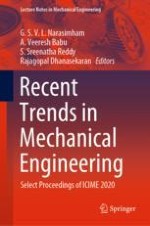2021 | OriginalPaper | Buchkapitel
Optimization of Friction Welding Process Parameters for Weldment of Aluminium–Copper Electrical Connector
verfasst von : Balkeshwar Singh, Worku Mamuye, Moera Gutu Jiru
Erschienen in: Recent Trends in Mechanical Engineering
Verlag: Springer Singapore
Aktivieren Sie unsere intelligente Suche, um passende Fachinhalte oder Patente zu finden.
Wählen Sie Textabschnitte aus um mit Künstlicher Intelligenz passenden Patente zu finden. powered by
Markieren Sie Textabschnitte, um KI-gestützt weitere passende Inhalte zu finden. powered by
